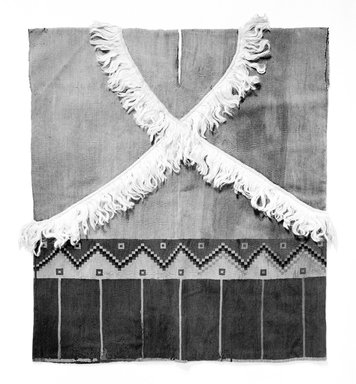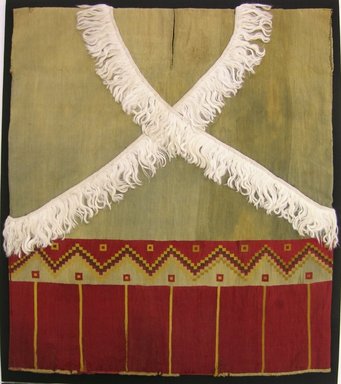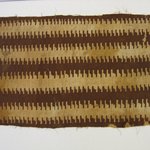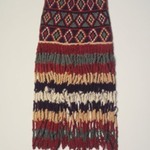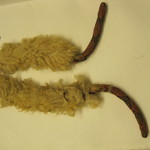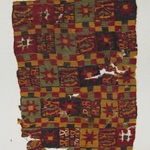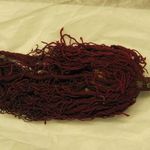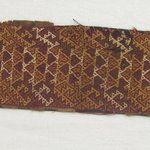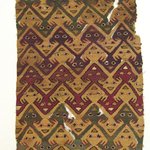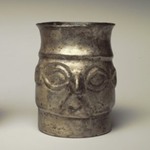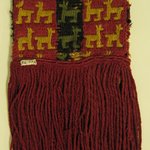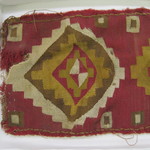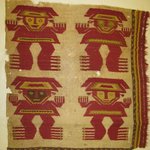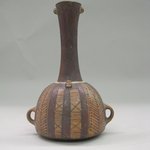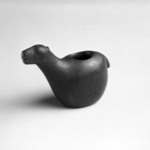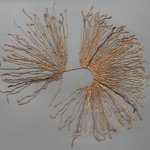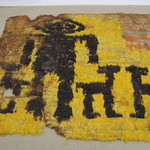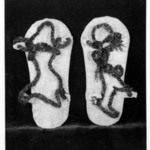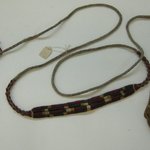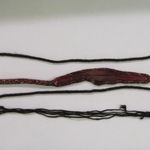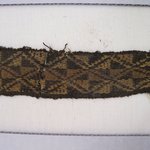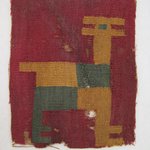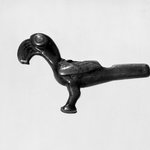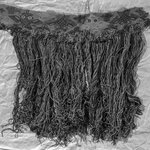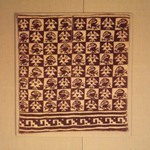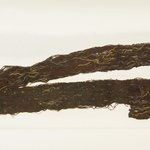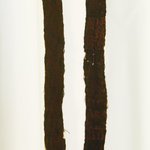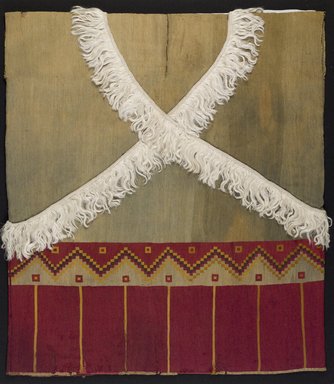

Inca. Tunic or Unku, 1400–1532. Camelid fiber, vincuna fringe, 35 7/16 x 31 1/8 in. (90 x 79 cm). Brooklyn Museum, Museum Expedition 1941, Frank L. Babbott Fund, 41.1275.106. Creative Commons-BY (Photo: , 41.1275.106_PS9.jpg)
Tunic or Unku
Arts of the Americas
The Inca considered textiles to be more valuable than gold and used them as symbols of power and authority. Rulers wore the finest tapestry-woven tunics, referred to as cumbi in the Quechua language. The geometric designs on this tunic, as well as the fineness of the weave, indicate an elite wearer. The unusual alpaca-hair fringe was likely added later, perhaps during the colonial period (1532–1821).
___________
Los incas consideraban que los textiles eran más valiosos que el oro y los usaban como símbolos de poder y autoridad. Los gobernantes llevaban las más exquisitas túnicas en técnica del tapiz, llamadas cumbi en la lengua quechua. Los diseños geométricos de esta túnica, así como la finura del tejido, indican que se trata de una prenda para la élite. El inusual flequillo de pelo de alpaca fue probablemente añadido posteriormente, acaso durante la época colonial (1532–1821).
___________
Los incas consideraban que los textiles eran más valiosos que el oro y los usaban como símbolos de poder y autoridad. Los gobernantes llevaban las más exquisitas túnicas en técnica del tapiz, llamadas cumbi en la lengua quechua. Los diseños geométricos de esta túnica, así como la finura del tejido, indican que se trata de una prenda para la élite. El inusual flequillo de pelo de alpaca fue probablemente añadido posteriormente, acaso durante la época colonial (1532–1821).
CULTURE
Inca
MEDIUM
Camelid fiber, vincuna fringe
DATES
1400–1532
PERIOD
Middle Horizon Period
DIMENSIONS
35 7/16 x 31 1/8 in. (90 x 79 cm) (show scale)



COLLECTIONS
Arts of the Americas
ACCESSION NUMBER
41.1275.106
CREDIT LINE
Museum Expedition 1941, Frank L. Babbott Fund
MUSEUM LOCATION
This item is not on view
CAPTION
Inca. Tunic or Unku, 1400–1532. Camelid fiber, vincuna fringe, 35 7/16 x 31 1/8 in. (90 x 79 cm). Brooklyn Museum, Museum Expedition 1941, Frank L. Babbott Fund, 41.1275.106. Creative Commons-BY (Photo: , 41.1275.106_PS9.jpg)
IMAGE
overall, 41.1275.106_PS9.jpg., 2018
"CUR" at the beginning of an image file name means that the image was created by a curatorial staff member. These study images may be digital point-and-shoot photographs, when we don\'t yet have high-quality studio photography, or they may be scans of older negatives, slides, or photographic prints, providing historical documentation of the object.
RIGHTS STATEMENT
Creative Commons-BY
You may download and use Brooklyn Museum images of this three-dimensional work in accordance with a Creative Commons license. Fair use, as understood under the United States Copyright Act, may also apply.
Please include caption information from this page and credit the Brooklyn Museum. If you need a high resolution file, please fill out our online application form (charges apply).
For further information about copyright, we recommend resources at the United States Library of Congress, Cornell University, Copyright and Cultural Institutions: Guidelines for U.S. Libraries, Archives, and Museums, and Copyright Watch.
For more information about the Museum's rights project, including how rights types are assigned, please see our blog posts on copyright.
If you have any information regarding this work and rights to it, please contact copyright@brooklynmuseum.org.
RECORD COMPLETENESS
Not every record you will find here is complete. More information is available for some works than for others, and some entries have been updated more recently. Records are frequently reviewed and revised, and we welcome any additional information you might have.
